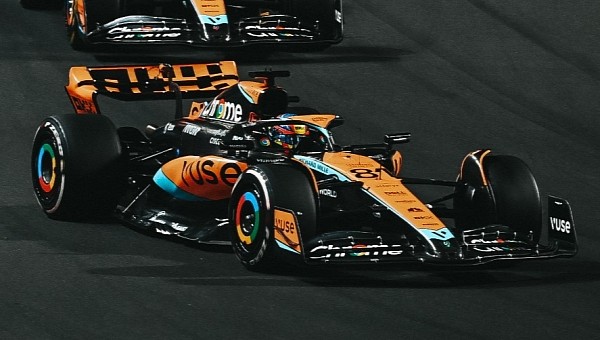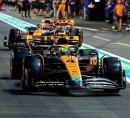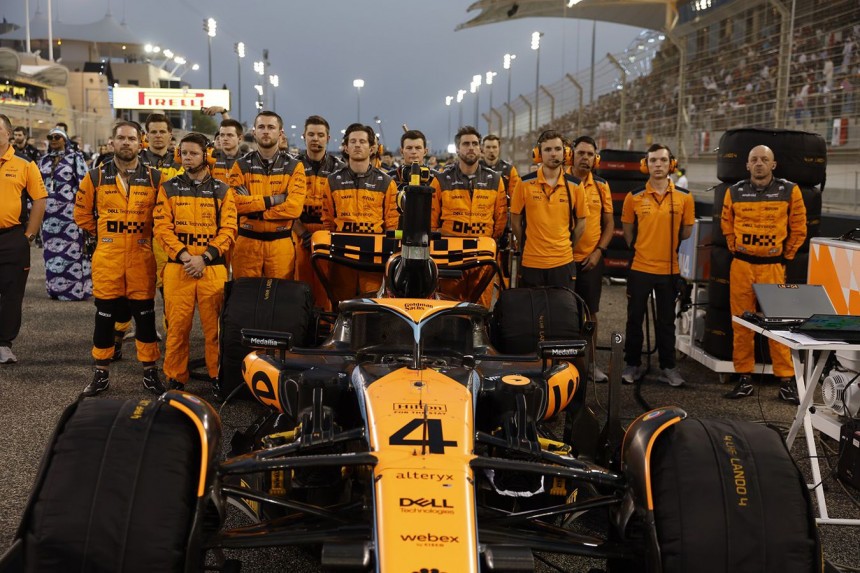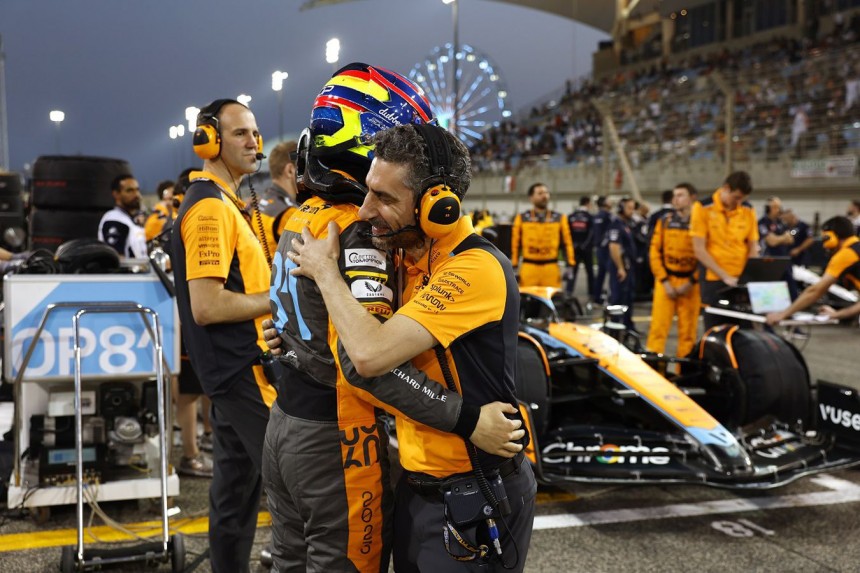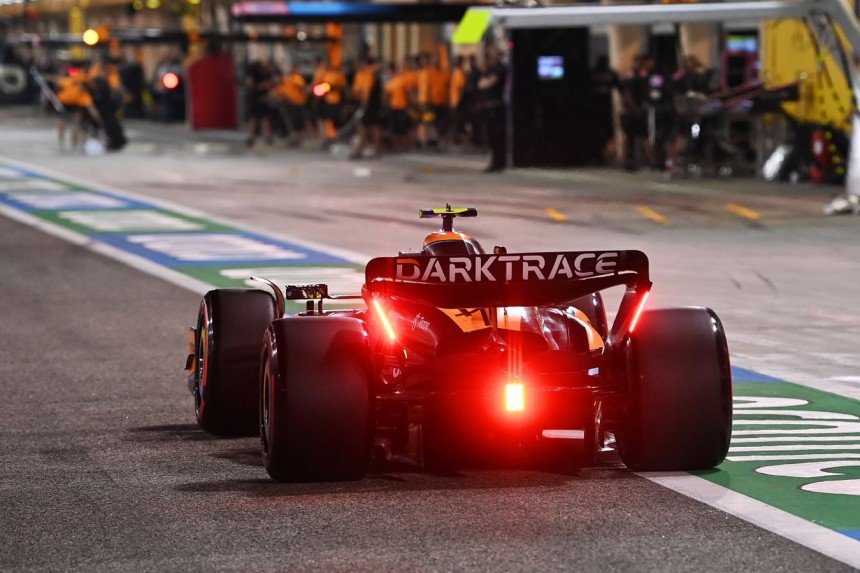When it comes to the world of Formula 1, it is as if teams take turns struggling in every given season, and this time around, it happens to be McLaren. Fans of the team are forced to see their favorite racing outfit go through what might be the worst start of the season in its entire history.
And McLaren is acknowledging the issues and starting to make big changes, right at the top level. The team has recently decided to part ways with its executive technical director, James Key.
The British engineer arrived at McLaren in March 2019 and has enjoyed two consecutive years of success with the team. But in the light of recent events, this seems to have been the result of groundwork that was laid before his arrival, as the change of regulations in 2022 revealed big problems.
McLaren’s decision to let its technical director go might sound odd at first glance, as poor performance in the two races of the 2023 season could be attributed to factors independent of raw pace. But there is no denying that the team started the season with an outdated car, and the results in the previous year were also poor.
Instead of continuing down the same path, McLaren is choosing to split its executive structures into three branches, each with a separate director. Peter Prodromou will be in charge of aerodynamics, while David Sanchez will handle the car concept department and Neil Houldey will be the technical director for engineering and design.
All of these departments will form the new technical executive team and will report to team principal Andrea Stella, who will be aided by Piers Thynne, newly appointed as COO. The aim of these changes is to make the development move at a quicker pace, in order to match McLaren’s ambition to challenge at the top, and maybe fight for titles in 2025.
That is the point by which McLaren will run out of excuses, with the wind tunnel and simulator being the latest in a long list. That deficit in infrastructure undoubtedly had an impact in 2022 and 2023. But as those upgrades will come online in June, they are expected to be fully utilized for the entire development process of the 2025 car.
As such, the technical team in charge of coming up with a competitive concept must be not only able to deliver but trusted to do so. McLaren obviously decided that James Key could potentially endanger the 2025 target, as weaknesses in its aero department were exposed during the 2022 season, partly leading to the deficit the team now faces.
This decision should not come as a surprise to Formula 1 fans who have been paying attention, as James Key has been distinctly absent from McLaren’s events. Instead, Zak Brown and Andrea Stella spoke on his behalf, hinting at development mistakes and missed targets during the launch of the 2023 car.
But such a decision can also have adverse effects on performance, as a lack of stability can generate new issues of its own, as exemplified by Ferrari’s revolving door of team principals. It is also true, however, that McLaren can’t afford to just keep doing the same thing that is obviously not working out.
What is more worrying, however, is that McLaren seems to be moving in the wrong direction, as the team has used this kind of divided technical leadership system before. That only served to throw the team into a downward spiral, creating a blame culture where everyone dodged responsibility and accountability.
This kind of work environment is in part to blame for legendary aerodynamicist and engineer Adrian Newey leaving McLaren back in 2006. So, heading back to the same culture the team was trying to get rid of when James Key was brought on board could be problematic.
But neither Andrea Stella nor Zak Brown is a stranger to this system, as they were instrumental in McLaren’s 2018 overhaul, the same year Brown took over as CEO. Stella joined the team alongside Fernando Alonso back in 2015 and saw firsthand how much damage this kind of structure could do in the world of Formula 1.
So, the fact that the two people who occupy the highest positions at McLaren chose to bet on this system working is somewhat encouraging, considering they are familiar with it. Separating the technical side into three different branches, each spearheaded by its own expert in the field, could end up paying dividends.
This entire shift in perspective from McLaren is also helped by the fact that regulations are about to go through another change and the team’s infrastructure is being updated. So, this might be the perfect time for McLaren to make these huge changes hoping they will lead to a good outcome in 2025.
The British engineer arrived at McLaren in March 2019 and has enjoyed two consecutive years of success with the team. But in the light of recent events, this seems to have been the result of groundwork that was laid before his arrival, as the change of regulations in 2022 revealed big problems.
McLaren’s decision to let its technical director go might sound odd at first glance, as poor performance in the two races of the 2023 season could be attributed to factors independent of raw pace. But there is no denying that the team started the season with an outdated car, and the results in the previous year were also poor.
Instead of continuing down the same path, McLaren is choosing to split its executive structures into three branches, each with a separate director. Peter Prodromou will be in charge of aerodynamics, while David Sanchez will handle the car concept department and Neil Houldey will be the technical director for engineering and design.
That is the point by which McLaren will run out of excuses, with the wind tunnel and simulator being the latest in a long list. That deficit in infrastructure undoubtedly had an impact in 2022 and 2023. But as those upgrades will come online in June, they are expected to be fully utilized for the entire development process of the 2025 car.
As such, the technical team in charge of coming up with a competitive concept must be not only able to deliver but trusted to do so. McLaren obviously decided that James Key could potentially endanger the 2025 target, as weaknesses in its aero department were exposed during the 2022 season, partly leading to the deficit the team now faces.
This decision should not come as a surprise to Formula 1 fans who have been paying attention, as James Key has been distinctly absent from McLaren’s events. Instead, Zak Brown and Andrea Stella spoke on his behalf, hinting at development mistakes and missed targets during the launch of the 2023 car.
What is more worrying, however, is that McLaren seems to be moving in the wrong direction, as the team has used this kind of divided technical leadership system before. That only served to throw the team into a downward spiral, creating a blame culture where everyone dodged responsibility and accountability.
This kind of work environment is in part to blame for legendary aerodynamicist and engineer Adrian Newey leaving McLaren back in 2006. So, heading back to the same culture the team was trying to get rid of when James Key was brought on board could be problematic.
So, the fact that the two people who occupy the highest positions at McLaren chose to bet on this system working is somewhat encouraging, considering they are familiar with it. Separating the technical side into three different branches, each spearheaded by its own expert in the field, could end up paying dividends.
This entire shift in perspective from McLaren is also helped by the fact that regulations are about to go through another change and the team’s infrastructure is being updated. So, this might be the perfect time for McLaren to make these huge changes hoping they will lead to a good outcome in 2025.
